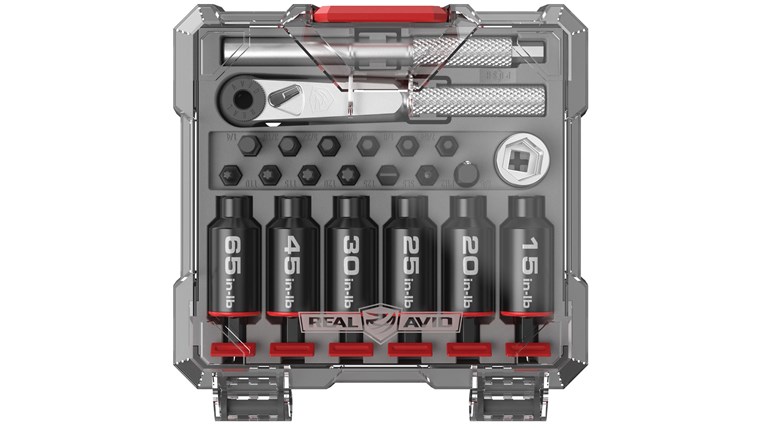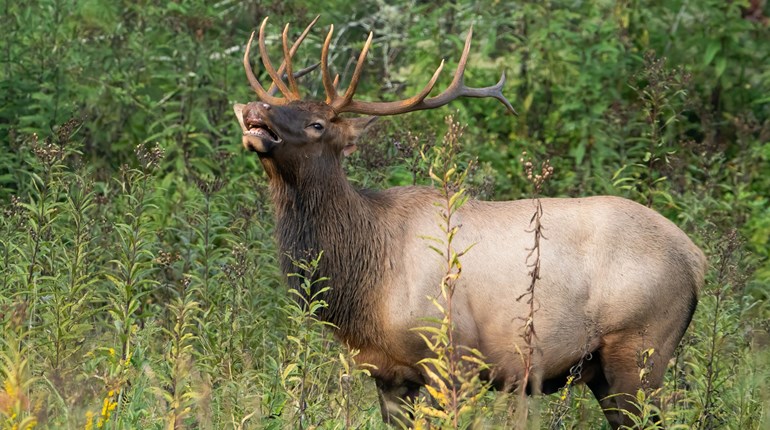
The word ‘wilderness’ suggests a remote, backcountry area, but the name is widely interpreted. To some, the wilderness is a campsite where toilet facilities include outhouses, where water isn’t available and critters such as skunks and raccoons may roam about at night. To others, the wilderness is a Holiday Inn with not enough towels. But Wilderness with a capital ‘W’ is a large chunk of typically rugged country in the hinterlands.
Wilderness areas came into being in 1964, signed into law by President Lyndon Baines Johnson. When signing the Wilderness Act, he said: “If future generations are to remember us with gratitude rather than contempt, we must leave them something more than the miracles of technology. We must leave them a glimpse of the world as it was in the beginning, not just after we got through with it.” There are 765 designated wilderness areas in the U.S. totaling more than 110 million acres, ranging in size from the tiny six acre Pelican Island National Wildlife Refuge in Florida to the huge Wrangell-Saint Elias Wilderness Area in Alaska, which contains more than 9 million acres. More than 50 percent of wilderness acreage is in Alaska
For big-game hunters, wilderness areas offer the ultimate experience. To be sure, these backcountry areas provide the quintessential hunt if one wants the challenges of temporarily living in a remote place with none of society's pleasures. Internal combustion engines are forbidden, which means generators and chain saws aren't allowed. Your light source will be a lantern, and you'll be cutting firewood with a hand saw, perhaps a crosscut-saw commonly referred to as a "misery whip." Wheels of any sort are not permitted, including carts or mountain bikes. You'll travel by foot or horse, typically the latter. Critters abound, and in some areas you’ll see grizzlies and hear wolves howl. The only “civilized” sound you’re apt to hear is the occasional jetliner high in the sky.
Mankind’s exploitations are not welcome in wilderness areas; there can’t be any roads, no mining is allowed, no timber can be cut, no wind farms and no drilling for oil. In other words, these areas are as pristine as they were when this country was settled, with the exception of some places where mining, logging and other pursuits were done prior to wilderness designations.
As someone with two forestry degrees and who was trained to view forests as a place producing commercial timber to be ultimately logged and turned into lumber, I must admit that there’s a deep satisfaction when I look at trees in wilderness areas and know that they’ll meet their end via disease, parasites, bugs, wind storms or fires. I’m no tree hugger—I always have a wide grin when I see a logging truck go by—but I’m delighted that there are places where nature is still untouched by man.
I’ve been fortunate enough to have hunted a couple dozen wilderness areas, mostly for elk, but some for moose, sheep, grizzlies, wolves and mountain goats. Those I’ve hunted most are the North Absaroka and Bridger wilderness areas in Wyoming, the West Elk Wilderness in Colorado, and the Selway-Bitterroot Wilderness shared by Idaho and Montana. These offer large areas, typically measured in acreages in the hundreds of thousands. My first-ever wilderness visit was some 40 years ago when I hunted elk in Montana’s Anaconda Pintler Wilderness. I didn’t know what to expect, but I savored every minute of the primeval experience, despite the fact that I didn’t take an elk.

I’ve known a few rugged individuals who hike into wilderness areas, making many trips with all their gear. This is a task for those with great determination—and strong backs. As an added chore, and a profound one at that, the demise of an elk or two will require a logistical challenge to transport the meat out in timely fashion, especially in warmer weather. Bears and other predators are always a concern, as well.
Hunters who are willing to hike in to hunt are few and far between. As I mentioned, the majority of hunters access the wilderness via a horse. A small number of hunters bring their own horses, but most hire outfitters. Let’s say you’re headed to the wilderness for the first time; your outfitter may pick you up at the airport where you’ll typically overnight in town before meeting at the trailhead in the morning. Once at the trailhead, you’ll meet your horse, be fitted correctly with the stirrups and be given basic instructions if you’re a new rider. The guides will pack your gear in panniers and load the packhorses, and soon you’ll be on your way. Your ride will probably last several hours, depending on the distance you’re traveling. Around Cody, Wyoming, where I live, most hunting camps are 20 miles or more from the trailhead; that’s a seven or eight hour (or more) ride. Finally, when your bottom is seriously starting to complain from being in the saddle too long, you’ll smell wood smoke and see camp in the trees. You’ll dismount, turn your horse over to the wrangler or one of the guides, stretch your weary muscles, and be shown to your tent.
Your guide will unpack your gear and bring it to your temporary home, which typically is a 10 by 10 or larger wall tent complete with a couple cots and a wood stove. There will more than likely be a camp cook and a dining tent, as well as some sort of latrine nearby in the woods. After a satisfying meal, you’ll retire to your sleeping bag and dream about the hunt, with big bulls offering easy shots.
Just because there’s a wood stove in your tent doesn’t mean you can bring a lightweight summer bag. Nights will get chilly in the high country, and you can count on the fire in your stove going out sometime after midnight. You’ll quickly learn that the temperature in the tent will rapidly approximate the outside air, leaving you shivering and downright uncomfortable. One solution is to keep adding wood to the stove throughout the night. A better solution is to take a heavy-duty sleeping bag in the first place, as well as a foam pad for under your bag which will insulate you from the cold air under the cot. Your bag might be rated for low temperatures, but when it’s compressed under your body weight, the important loft is gone and your bag will lose its ability to keep you warm.
On the other hand, there’s spike camp, which has none of the comforts of the wall tent and wood stove. This camp is for hunters on the move, usually very small parties. You’ll typically be traveling with a guide, either on horseback or afoot, packing lightweight gear that you’ll carry on your back or on one or two horses. This nomad-type travel is not for someone who isn’t in good physical condition. You’ll bivouac where late afternoon finds you, setting up a quick, spartan camp. You’ll have a small tent, lightweight bag, minimal dried food and only basic essentials. You won’t have a heated tent, you’ll cook on a campfire or a tiny portable stove, probably sleep on the ground or a pad, and you’ll be continually dealing with the elements. Spike camps are typically used for sheep and goat hunters who move long distances each day in pursuit of the quarry, but I’ve spiked out many times for elk, as well. As you can imagine, much thought goes into planning what lightweight, portable gear and food you’ll take to a spike camp.
Don’t count on using a cell phone on your wilderness hunt, as it probably won’t work, though I recall a place in Colorado where you could hike 200 yards above camp, stand three feet away from a certain aspen, and get enough bars to make a call. If you must have communication with the outside world, rent a satellite phone for the duration of your stay—they work everywhere. I’ve used them everywhere from Africa to remote areas in the Arctic and Alaska.
So far, this article has addressed official wilderness areas where many restrictions apply, but you can also hunt in the wilderness outside those areas. Only a small percentage of the 193 million acres of U.S. Forest Service land is made up of official wilderness areas, the rest have fewer restrictions. If you’re doing a DIY hunt, you can use your chain saw or generator, and can drive in many areas, though you must follow travel rules. By all means, get a National Forest Atlas and travel map from the ranger district before the hunt. Be aware that if you’re doing a DIY hunt in Wyoming, nonresidents must be accompanied by a licensed guide in an official wilderness area.
In many backcountry areas of the United States, you’ll be sharing your world with apex predators, notably grizzlies, black bears, wolves and mountain lions. Be prepared, whether you’re hunting with a guide or not. Carry bear spray and/or a handgun, and check on the rules where you’ll be hunting regarding meat storage in camp or at the site of the kill. Regarding the latter, in many areas you must hang meat 10 feet off the ground and four feet away from the tree trunk. This is to deny access by grizzlies, since many human-bear encounters occur when a bear discovers meat on the ground and the hunter returns the next day to pack it out. When a bear finds and claims your elk, it’s not your elk anymore; leave the area and do not irritate the bear. You don’t want to be written up in the local newspaper as you recover in a hospital, if you recover at all. This is not to be an alarmist, it’s just reality and good common sense.
If there are no trees around to hang the elk quarters and you must return in the morning with help to pack the meat out, do the next best thing: move the quarters into an opening in the forest where you can observe the meat from a distance before you approach. That way, you can use your binoculars to see if the meat has been moved or partially buried, indicating the work of a bear. If it is, the bruin is apt to be bedded close by guarding its newly discovered feast.
On a memorable hunt in the backcountry, I was guiding my very dear friend, Bill Rooney, who lives in Virginia. Bill is an eloquent guy, and, in fact, is a former Managing Editor of American Hunter. At one point, we sat down on a ridge and took in the splendor of the wild country around us, and Bill said, “Listen, can you hear that?” I was puzzled, and answered, “I don’t hear a thing. What do you hear?”
“Silence,” he said, simply. I heard it too, a magical moment in the wilderness—a special place where we can bond with nature as it used to be before we exploited it.


































